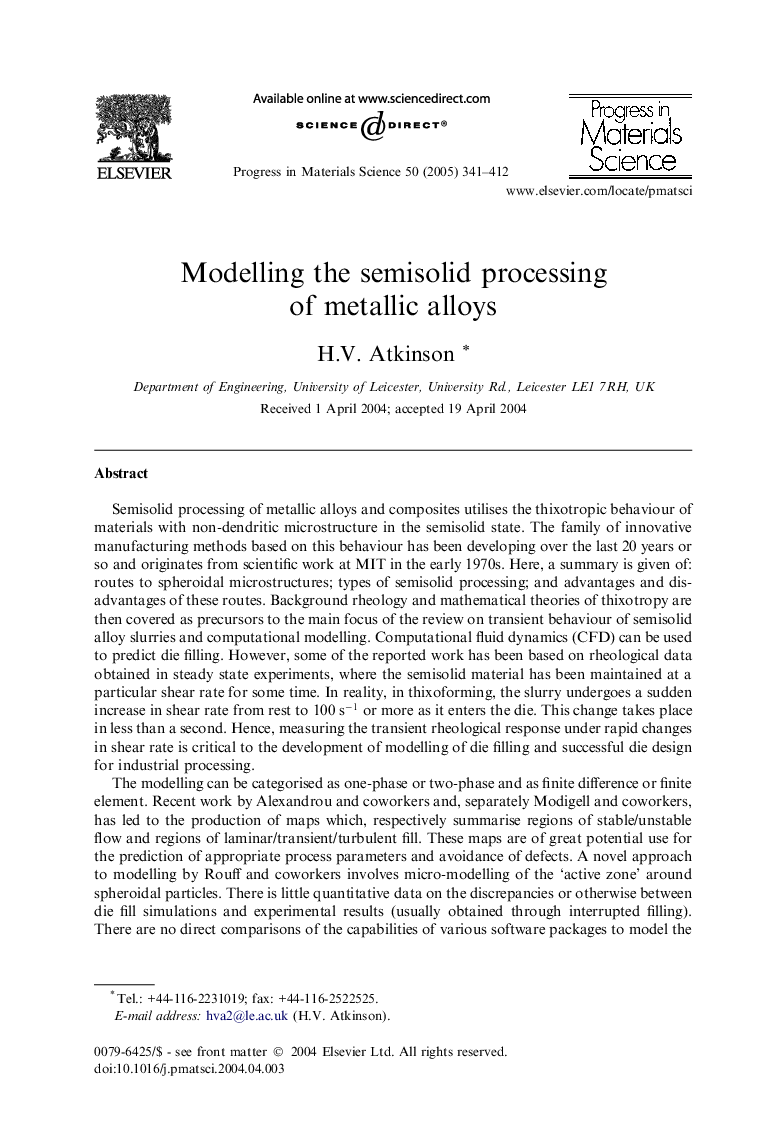| Article ID | Journal | Published Year | Pages | File Type |
|---|---|---|---|---|
| 10668007 | Progress in Materials Science | 2005 | 72 Pages |
Abstract
The modelling can be categorised as one-phase or two-phase and as finite difference or finite element. Recent work by Alexandrou and coworkers and, separately Modigell and coworkers, has led to the production of maps which, respectively summarise regions of stable/unstable flow and regions of laminar/transient/turbulent fill. These maps are of great potential use for the prediction of appropriate process parameters and avoidance of defects. A novel approach to modelling by Rouff and coworkers involves micro-modelling of the `active zone' around spheroidal particles. There is little quantitative data on the discrepancies or otherwise between die fill simulations and experimental results (usually obtained through interrupted filling). There are no direct comparisons of the capabilities of various software packages to model the filling of particular geometries accurately. In addition, the modelling depends on rheological data and this is sparse, particularly for the increasingly complex two-phase models. Direct flow visualisation can provide useful insight and avoid the effects of inertia in interrupted filling experiments.
Related Topics
Physical Sciences and Engineering
Materials Science
Nanotechnology
Authors
H.V. Atkinson,
